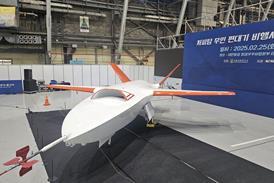What will be the biggest managerial challenge faced by airline chiefs in years to come? There are many candidates: marketing in a deregulated environment; cost cutting; attracting new business; finding new markets; alliances; managing union relationships. But the biggest challenge will probably be controlling the enterprise.
Most major airlines have recognised that the current way of doing business simply will not work in the long term. The economic roller-coaster leaves airlines struggling for survival in the bad times, only to spend the good years struggling to make enough money to cancel their previous years' losses. Even profitable carriers like British Airways fail to achieve the double-digit profit margins necessary to satisfy the shareholders and meet future investment needs.
Unfortunately, the prognosis for the future is poor. Intensifying competition and consumer expectations mean that yields will decline. Technology does not promise any step changes in operating efficiency, and the world's most efficient carriers don't have much fat left to trim out of their organisations. Today's profitable carriers will face constant pressure to find unit cost savings sufficient to keep ahead of falling yields; today's money-losing carriers have more scope to improve efficiency, but face more obstacles in doing so.
This is why the most forward looking airlines are searching for new ways of organising their companies. In the wider world of business, monolithic organisations (like airlines) are no longer fashionable. Small, lean and focused are the buzz-words among management theorists. They say enterprises should concentrate on their strengths, disposing of non-core businesses and buying in expertise wherever possible.
This explains many of the trends in today's airline business, including franchising, spinning off maintenance and other services into subsidiaries, and selling off peripheral interests such as hotels. Yet when combined with alliances, this latest restructuring poses a new set of management challenges for airline chiefs: how to keep control over such a complex and fluid organisation?
Control is particularly important for airlines, for three main reasons. The first is safety. Instilling a safety-first culture ought to be the first priority for any airline chief. That's hard to do if many of the people who are crucial to safety are not employed by the airline, but instead are part of another airline (and linked through a franchise or codesharing deal), or are from a third-party maintenance or engineering company.
The second issue is service. The airline business is a service business, and employees who come into contact with passengers must reflect the service culture created by the airline. This is difficult if they don't work for the airline. Many carriers already complain about ground handling monopolies at airports, saying they prefer to check in their own passengers. Yet they often send their customers off to fly with a different carrier.
Finally, there is the integrity of the product. Punctuality and reliability are clearly essential ingredients of an airline's product; contracting services out risks damage in this area. Furthermore, airlines cannot make a decision in one area without affecting another. It is difficult enough to get different airline departments to integrate their decision making to ensure that the marketing department's bright idea does not turn into the engineering department's nightmare.
Control is relatively easy to exert within a single organisation, where traditional top-down management structure makes it straightforward to communicate business goals throughout the organisation. It is easy to check whether the goals are being met and to take action if they are not.
Turn an airline into a complex web of interacting, but separately owned and managed entities and you have a whole new situation. Instead of having an in-house team environment, relationships are governed by legal contracts. Instead of having one clear business goal - to make their airline succeed - employees and managers have to deal with a range of potentially conflicting demands. The potential for tension is obvious.
This is not to say that airlines should rush back to the security of their previous monolithic structures. It is refreshing to see carriers experimenting with new management ideas which may enable them to improve their performance and their ability to survive and thrive.
Tomorrow's airline director may have few internal staff but a complex web of relationships with outsiders, who may have different priorities and a different attitude. Managing those relationships could be the biggest challenge yet.
Source: Airline Business























